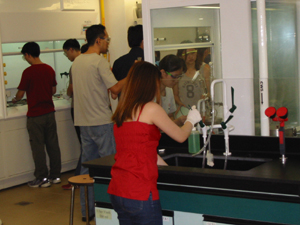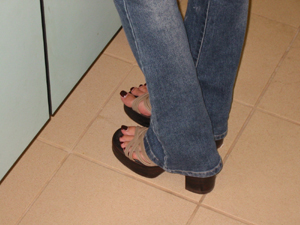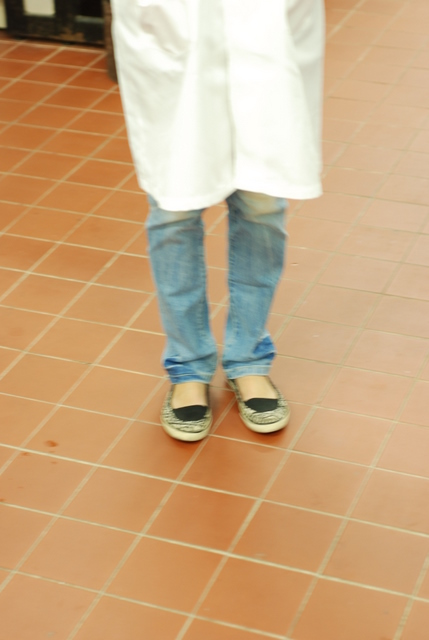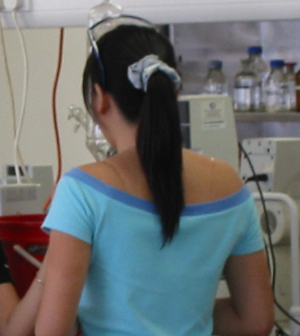Clothing must offer good protection against chemical spills and splashes. Tank tops, off-shoulder tops, halter-necks and shorts are not allowed.Legs and waists must be covered by your clothing. Excessively loose and flowing clothing should not be worn to labs
Eating or drinking is forbidden in laboratories and workshops and smoking is forbidden in all parts of the Building. Eating or drinking is only permitted in designated student areas where there is no contact with chemicals.
| Safety Glasses | Safety Glasses are available from Lab Supplies – payable from your supervisor’s grant for the first pair but you must pay for replacement of losses. Safety Glasses must be worn in all designated areas and whenever you are handling chemicals, glass vacuum or pressure apparatus and equipment with moving parts.
Contact Lenses: There is an ongoing debate as to whether it is safe to wear contact lenses in a Chemistry Laboratory. The most important advice remains: wear Safety Glasses. |
| Laboratory Coats | Wearing a lab-coat can give considerable protection against splashed chemicals and flash burns. Lab-coats must be worn in areas where wet chemistry is carried out. This is the case in all synthetic chemistry laboratories. Remove lab coats, gloves or other personal protective clothing before leaving the lab. This clothing may have been contaminated and you could spread the contamination. |
| Protective Gloves | Disposable gloves give short-term protection against some chemicals but some solvents may attack them. Many grades of gloves can be obtained which offer more, or less protection.
See the http://www.chm.bris.ac.uk/safety/gloves.htm for full details of available gloves and guidance for their use. Even if you have been wearing gloves, wash your hands frequently when working. Never wear rubber or plastic gloves when working with a naked flame. Never wear gloves outside the lab. Gloves should not be worn for handling computer terminals, any equipment or door knobs. |
| Shoes | Shoes which fully cover the feet and toes and not slip-ons should always be worn in a lab to protect against chemicals and glass cuts. Sandals, flip-flops, clogs, backless shoes, cloth shoes, open-toed shoes, high heeled shoes and stiletto-heeled shoes are strictly not allowed. In the laboratory, wear shoes with uppers made of leather or polymeric leather substitute |
| Personal Attire | Clothing must offer good protection against chemical spills and splashes. Tank tops, off-shoulder tops, halter-necks and shorts are not allowed. Legs and waists must be covered by your clothing. Excessively loose and flowing clothing should not be worn to labs. |

Skimpy clothes does not offer any protection against splashes. Wearing gloves to operate the tap contaminate the handle.

Open-toes shoes does not offer any protection against spills and splashes.

Shoes should cover feet and toes fully.

Safety glasses are meant to be meant over the eyes, not over the head